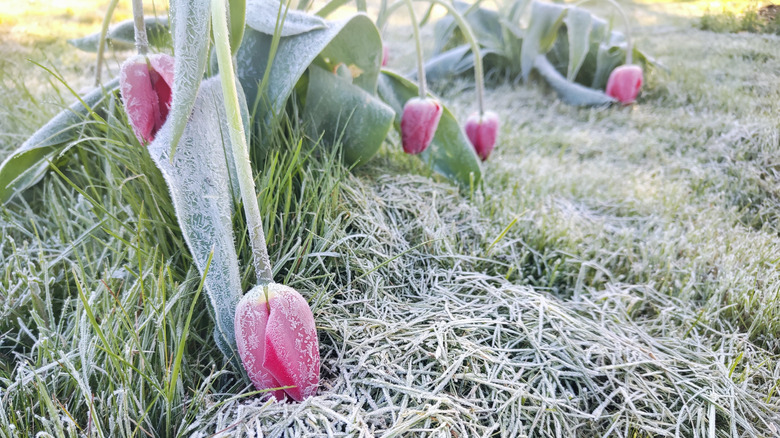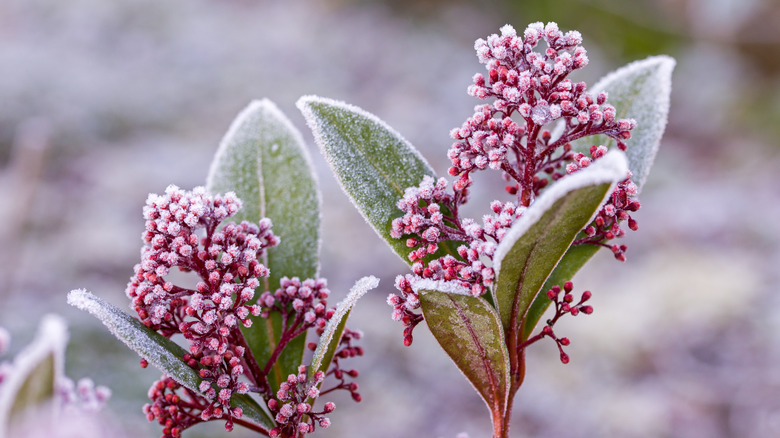Frost, Freeze, And Hard Freeze: How They're Different & Why It Matters For Your Garden
When the forecast hints at an oncoming frost, it's tempting to panic, but not every cold snap spells disaster for your garden. Knowing the difference between a frost and a freeze or hard freeze will help you decide whether to cover delicate plants and when to let nature handle things naturally. A frost often forms close to the ground on calm, clear nights when the surface temperature dips to 32°F, even though the air a few feet higher is still above freezing. That's why you might see silvery crystals on your lawn when your outdoor thermometer reads 34°F.
A freeze, however, happens when the cold runs deeper. When the entire air mass — not just the ground surface — drops to 32 °F or below, plants can begin to experience cold damage. Once temperatures fall to 28°F or lower, it becomes a hard freeze, and this is the point where most non-hardy plants have stopped growing for the season. The National Weather Service issues frost or freeze warnings based on these thresholds.
Light frosts may only nip leaf tips, but freezes can blacken buds and collapse foliage overnight. There are a few tips you can use for protecting your plants from frost, so before panic-harvesting your crops, remember that many plants can ride out a light frost unharmed. This is especially true for cool-season vegetables and woody shrubs.
How to tell which cold event you're facing and how to respond
The science behind each event explains why the same night can leave frost on your car roof but not kill your plants. Frost can form even when air temperatures stay above freezing, because surfaces radiate heat away and cool faster than the air. Whether frost appears depends on humidity and the dew point; the temperature at which moisture condenses. If the dew point is below 32°F, water vapor can freeze directly onto leaves. While a light frost (32–36°F) may only damage tender foliage, a freeze or hard frost can mean more for your perennials and annuals; once the temperature dips below 28°F, your annuals can die.
Gardeners should treat frosts as short-term events, and freezes as more serious cold intrusions. Cover plants with fabric or row covers on clear, calm nights, and avoid plastic, which traps moisture and worsens damage. There is one watering trick that will save your plants from frost damage: Water plants early in the morning after a temperature drop is announced to create a protective barrier. Unfortunately, this doesn't work for a hard freeze.
Late-season spring freezes are most damaging. Buds on peaches, apples, or magnolias can blacken if temperatures plunge after they bloom. Fortunately, most perennials, shrubs, and even damaged trees rebound within weeks once warmth returns. Understanding the type of cold you're dealing with helps you react calmly — and keeps your garden thriving through the season's temperature swings.

